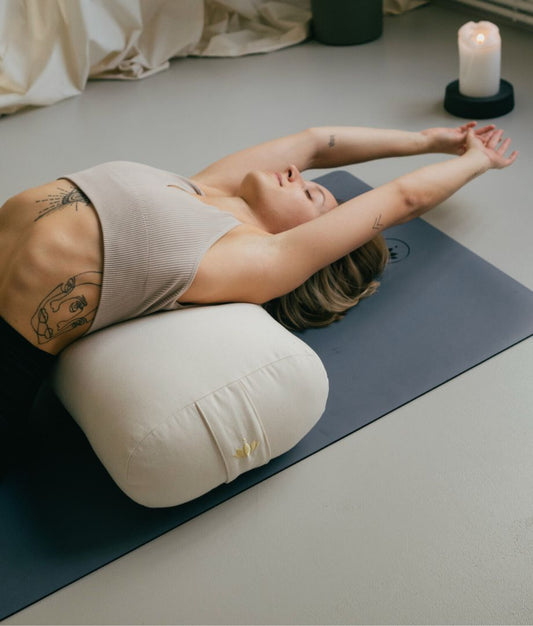
Set-Offers
Save when you buy a set
Shopping cart
Your shopping basket is empty
Yoga
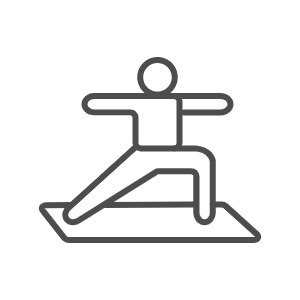
Meditation
Bundles
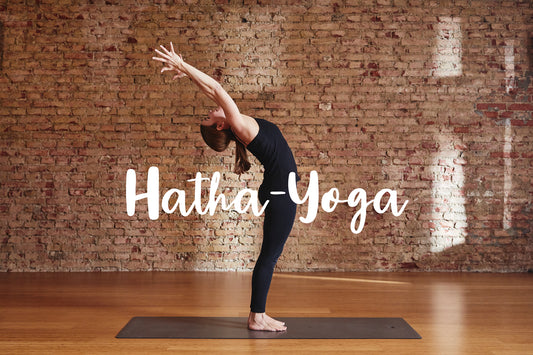
| Yoga
There are many different styles of yoga, but few are as well known as Hatha yoga. This type of yoga includes the sun salutation, cobra and other similar practices traditionally associated with yoga in Western society.

The term, derived from Sanskrit: next to "ha" (sun, power) is "tha" (moon, stillness). In Hatha Yoga, opposing forces come together. This article explains why a yoga practice in the Hatha style is best suited for beginners and which postures you can practise at home.
The most popular style of yoga in the West consists of three pillars:
The combination of asanas (movement) and pranayama (breath) promotes flexibility and patience and generally help increase awareness of one's own body.
Many people see yoga merely as a way to strengthen muscles and lose some weight - but in fact, it's about much more than just the physical aspect.
Hatha yoga is well suited for beginners, as there are exercises for every fitness level or age. Of course, beginners should not immediately try more challenging poses such as the crow, but basically, anyone can start with Hatha Yoga.
First off: Yes, absolutely! Hatha yoga is the perfect introduction to the world of yoga and is practised by beginners and advanced students at every level and age.
Besides a yoga mat and comfortable clothes, the only thing you need to bring is the right attitude: only when you actively engage in consciously observing your body and mind can the yoga postures release blockages and have a lasting relaxing effect.
If you are a beginner, you should pay attention to one thing above all: your own body. From the beginning, try to perform the exercises cleanly and consciously find out where your limits are. Please remember: yoga is not a competition that you have to win with particularly complex asanas. With this in mind, you can get started!
Those who regularly take to the yoga mat will soon feel the first positive effects - and they are something to behold:
Hatha yoga can also help:
We are often asked about the proper order and a correct sequence of exercises - to begin with: there is no "right" and "wrong" here, just as there is no "correct Hatha Yoga practice sequence".
A favourite sequence that follows a fixed pattern is the sun salutation. We have already introduced this to you in more detail in our blog post on sun salutations.
In the following section, we will show you a few more popular exercises that you can try out one after the other. However, always be aware of your inner self and intuitively practise exactly those good asanas.
All you need for a yoga session at home is a yoga mat or other soft surfaces. Your clothes should be loose enough to allow you to move freely.
A flow, i.e. a flowing sequence of single Hatha postures, is not a must for your yoga class, but it often comes naturally. In general, a yoga session consists of three phases: Warm-up, flow phase and final relaxation. But what does that look like in real terms?
Muscles should be warm before commencing with strength exercises. Two classic warm-up yoga poses are Cat-Cow and Downward Facing Dog.


IBegin with your hands and knees on the floor· Inhale for cat-pose. Draw your belly to your spine and round your back toward the ceiling. The pose should look like a cat stretching its back. Exhale for cow-pose as you drop your belly towards the mat. Lift your chin and chest, and gaze up toward the ceiling. Alternate between cat and cow for a few breaths.

Start on all fours and make sure your knees are slightly behind your hips. Your hands should be shoulder-width apart and spread your fingers out wide. Press your hands into the mat and gently tuck your toes under and take a deep inhale. Then slowly press the whole body upwards so that an inverted V is formed. Hold the pose for a few seconds once you have found a comfortable position. Afterwards, you can switch back to Cat-Cow or begin flow exercises.

The following exercises may be varied or enhanced as you wish and are only a tiny sample from the Hatha Yoga repertoire.
Begin on your hands and knees, stretch the legs backwards one after the other and place the balls of the feet on the ground so that you come into a push-up position. Make a straight line between head and feet.
The position is easier if you tighten your abdomen and breathe consciously. After a couple of breaths, lower yourself back down.

Also called a child’s resting pose - for a good reason. Sit on the balls of your feet, stretch your upper body towards the mat, stretch your arms out long in front of you or place them next to your legs behind you. Gaze down and relax for a few seconds before returning to an all-fours position and finally to Downward Facing Dog. This time, from Downward Dog, bring your feet, one after the other, to meet your hands and stand firmly on both feet. Bring the fingertips back down to the feet after standing in a tabletop position for a brief moment.

While your upper body is still bent forward, drop your head and lower your body towards your feet. Optionally, cross your arms in front of your head, let them hang loosely, grasp your lower legs or your feet (see illustration). After a few breaths, place the hands back on the floor and return to an all-fours position.
There are several final relaxation poses, but the best known is "Savasana", the so-called corpse pose: lying on your back, stretch your arms and legs out to the sides. The feet point outwards, the palms downwards. In complete relaxation, breathe deeply in and out for at least one minute.
Regardless of the flow you choose and the length of the session, Hatha yoga offers relaxation and increased balance over time. It may take a little getting used to, but the effect on body and mind is guaranteed. With this aim, see you on the mat!
For more information on other yoga styles and, please see our feature stories on various types of tips on yoga exercises:
- Bikram Yoga
- Acroyoga
- Power Yoga
- Kundalini Yoga
- Iyengar Yoga
- Jivamukti Yoga
- Ashtanga Yoga
- Hormone Yoga
Are you still at the very beginning of your yoga path and don't really know which style you want to explore? Find an overview here of all popular yoga styles along with a flow chart to help you decide. Have fun trying it out!
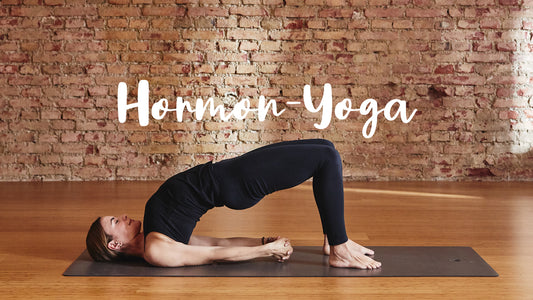
The positive effects of yoga are well known: Whether classic Hatha Yoga or Vidya Yoga, there are many styles that you can use to do something good ...
Continue reading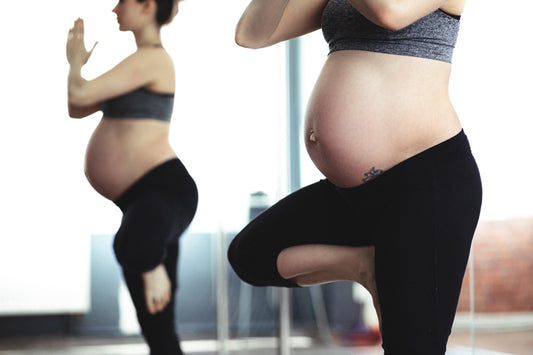
Pregnancy is a time of extremes for the body, but also for the mind. Sooner or later, many expectant mothers feel overwhelmed with the growing bel...
Continue reading
There are no comments yet. Be the first to leave a comment!